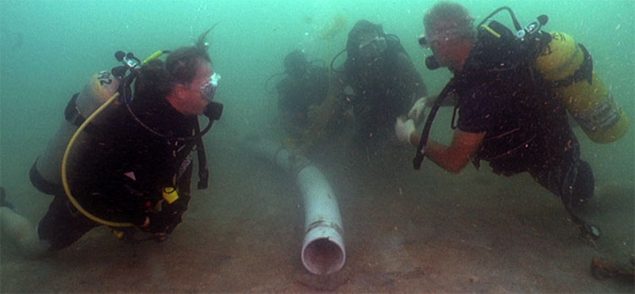Underwater archaeological excavation is very similar to traditional land archaeology. Marine archaeologists use similar tools, but will opt for the plastic version of the tool so that it does not fall apart in the salt water. The archaeological goal of excavating materials in a controlled fashion where the original location of each object or artifact can be recorded and analyzed later is the same wherever you dig. The methods employed as we work underwater are slightly different because of the environment and the need for some different tools.
Most “tools of the trade” used on terrestrial archaeological digs are used for underwater excavations as well. Hand trowels, square units, clipboards, pencils, tape measures, and other hand tools are all used underwater to excavate sites as they are used on land.
However, rather than shovel dirt into a bucket or wheelbarrow and bringing it to a fine screen to shake it, or wash it with water to remove the dirt, marine archaeologists use a 100-foot hose connected to a large dredge engine with a pump that moves 600 gallons of water a minute to suck the seafloor sediments like a giant vacuum cleaner. The dredge tube brings the sediments from the bottom and deposits them on an 8 by 12-foot floating screen deck that has mesh as fine as one-sixteenth of an inch to catch even the smallest of artifacts or bone fragments.


